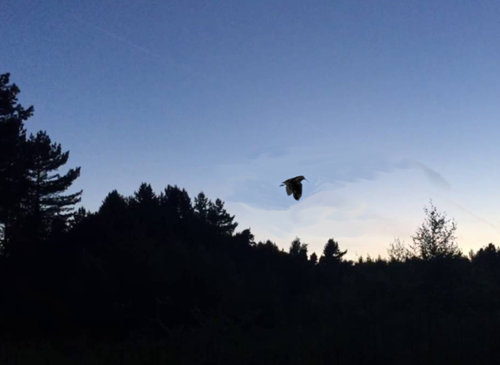
As summer turns to autumn, the woodcock’s annual timetable shifts its focus from breeding, which is now complete, to migration. But before the birds can get on their way, there is one important event to consider: moult.
The moult period can be an aggravating time for a woodcock scientist (or sponsor), as the amount of data we receive from our tags is very limited. The tags tend to stop transmitting for a couple of weeks and we think it’s because the batteries do not remain charged. Originally, we had some concern that the moulting feathers were growing over the tag’s solar-panels, but we’ve since recaught tagged woodcock and seen that this is not the case. Instead, we have to assume the cause of their temporary disappearances is behavioural; because the birds feel more vulnerable while moulting they spend more time tucked away in dense vegetation where the light does not penetrate.
The last time we heard from any of our birds was early September. Phynodderee transmitted on the 4th, Holkham and Wensum on the 5th and Fonthill Abbie II on the 6th, since then – silence. They were all still on their breeding sites at that point except Phynodderee, who’s wanderings are described in a recent blog (https://www.gwct.org.uk/blogs/woodcock-watch-blog/2018/august/phynodderee-moves-from-latvia-to-northern-russia/ ).
Moulting is a chance for woodcock to replace their old feathers, which will by now be very worn. The amount of wear their wing feathers receive during their long migrations is considerable and an annual change is necessary. For adults, i.e. bird hatched last year or before, practically all feathers are replaced in autumn.
Juvenile woodcock only complete a partial ‘post-juvenile’ moult. Their feathers are relatively new, they were only grown this spring, but like any bird the young woodcock’s development is hurried. The flightless pre-fledging stage is a dangerous time and young birds have to grow their feathers quickly, meaning that they are often of an inferior quality to those of adults. This is why juvenile woodcock replace some, but not all, of their feathers in autumn; it is a trade-off between the benefit of newer stronger feathers and the energetic cost of growing them.
When the woodcock arrive here in the UK this winter the difference in plumage will still be obvious. The older birds will have fresh adult-type feathers, while the juveniles will retain juvenile-type feathers across most of the wing. This difference is important to us because it allows us to calculate the ratios of adults to juveniles in the population each winter. If the ratio of juveniles to adults is lower, it is a sign of poorer breeding success among continental populations.